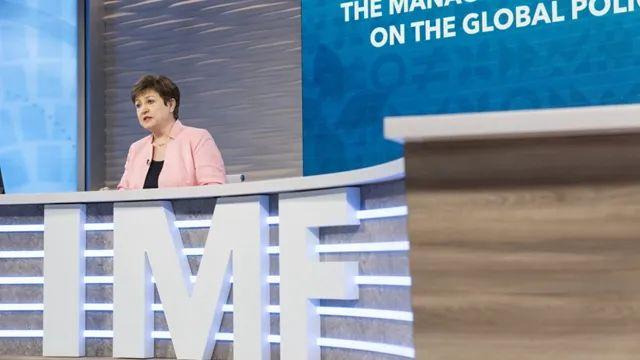
Recently, the global economic growth prospects have been overshadowed, and many international authoritative institutions have successively downgraded their global economic growth forecasts for 2025. The Organization for Economic Co-operation and Development (OECD) has lowered its forecast for global GDP growth in 2025 by 0.2 percentage points, and Fitch Ratings has further reduced it to 2.3%. Moreover, the Bank of America's March fund manager survey shows that the monthly decline in global economic growth expectations has reached a new high since 2020. Behind these data reflects that the global economy is facing severe challenges.
From a macro perspective, the continuous uncertainty of US tariff policies has become a key factor dragging down global economic growth. In recent years, the United States has frequently imposed tariffs, erecting barriers in international trade. This not only directly increases the trade costs of enterprises, making multinational companies hesitant in their global industrial chain layout, but also triggers a series of trade frictions, disrupting the originally stable global trade order. Many countries and regions that rely on exports have seen their economic growth severely impacted, and the driving force of international trade as an engine for global economic growth has significantly weakened. For example, the export-oriented industries in some emerging economies have experienced a sharp reduction in orders, forcing enterprises to cut production capacity, which in turn affects employment and overall economic development.
Against this backdrop, the trend of global economic growth being lower than the previous average level has become more and more obvious. How to maintain medium-term economic growth has become the focus of attention from all sectors. At the 2025 Annual Meeting of the China Development Forum that ended on March 24, Nigel Clarke, Vice President of the International Monetary Fund (IMF), put forward constructive views. He emphasized that promoting structural reforms is the key to improving productivity.
Increasing public research expenditure is an important part of structural reforms. The government's increased investment in scientific research can provide solid financial support for scientific and technological innovation. For example, in some basic scientific research fields such as quantum computing and gene editing, the injection of public funds can attract top scientific research talents and carry out cutting-edge research. These basic research achievements can not only lay the foundation for future technological breakthroughs but may also give birth to new industries and create new economic growth points.
Subsidizing private R&D is also indispensable. Through government subsidies, enterprises can reduce costs in the R&D process and enhance their motivation for innovation. Take the new energy vehicle industry as an example. Many countries have encouraged enterprises to increase their R&D investment in battery technology and autonomous driving technology through subsidy policies. This has enabled new energy vehicles to achieve significant technological progress in just a few years, with an expanding market share, driving the development of related upstream and downstream industries and injecting new impetus into economic growth.
Improving resource allocation is also an important measure to improve productivity. In the current global economic environment, the efficient use of resources is particularly important. The government can guide resources to flow to industries with high growth potential and innovation capabilities by formulating scientific and reasonable industrial policies. For example, in the digital economy field, encourage resources to gather in emerging industries such as big data, artificial intelligence, and cloud computing, promote the rapid development of these industries, increase their proportion in the national economy, and thus improve the overall operating efficiency and competitiveness of the economy.
In addition, strengthening international cooperation is also a necessary means to address the global economic growth dilemma. All countries should abandon trade protectionism, work hand in hand, and jointly promote global trade liberalization and investment facilitation. By establishing more open, fair, and transparent international trade rules, reducing trade barriers, and promoting the stability and optimization of the global industrial chain and supply chain. Only in this way can the role of international trade as an engine for global economic growth be reactivated and sustainable global economic development be achieved.
Although the downgrade of global economic growth expectations has brought many challenges, it also provides an opportunity for countries to promote structural reforms and strengthen international cooperation. By taking practical and effective measures to improve productivity and optimize resource allocation, the global economy is expected to gradually emerge from the dilemma in the medium term and achieve stable growth.

Since 2022, the Fed has cumulatively reduced its balance sheet by $2.4 trillion through quantitative tightening (QT) policies, leading to a near depletion of liquidity in the financial system.
Since 2022, the Fed has cumulatively reduced its balance sh…
On December 11 local time, the White House once again spoke…
Fiji recently launched its first green finance classificati…
Recently, the European Commission fined Musk's X platform (…
At the end of 2025, the situation in the Caribbean suddenly…
The U.S. AI industry in 2025 is witnessing a feverish feast…